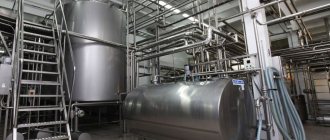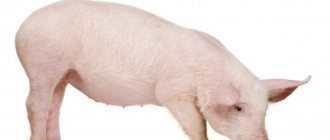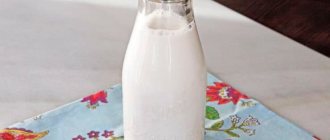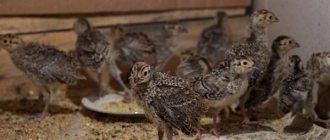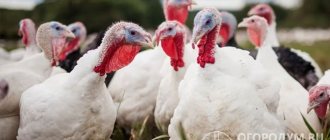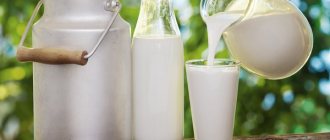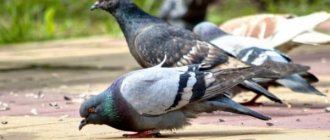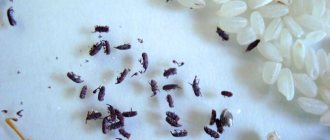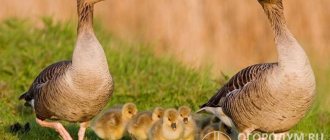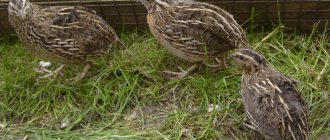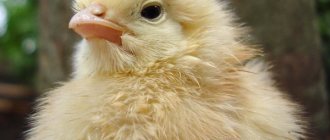Goats on free grazing often eat small amounts of celandine and other poisonous plants.
Every goat breeder thinks about what food can be given to goats and what cannot be included in the animal diet. Hay, green grass, haylage, concentrates, root vegetables - this is what to feed a goat, but it is important to know about the norm and the presence of toxins and dangerous substances in them. Some foods can cause poisoning even when fed in small quantities, while other goats eat without any consequences. Poisonous and harmful plants, often growing in abundance in natural hayfields and pastures, causing poisoning and death of animals, cause great damage to goat breeding. The danger of poisoning increases if animals stay on a new site, especially a low-yield pasture, for a long time and, after eating good forage plants, are forced to eat inedible and poisonous herbs.
Feeding regimen for goats
Goats eat a lot - one animal consumes about 13 kg of various feed per day in summer. So much because they are ruminants, adapted to free grazing. Little is required from the farmer - to provide the animals with grazing for 6-7 hours during the most productive morning and evening times. It is there that the goats will pick up most of the necessary nutrients (about 10 kg of grass or hay), and the rest should be added when the animals are at home - in the early morning and evening.
The most nutritious food is concentrate, best given in the morning. During the day in winter, it is recommended to give out roughage and succulent feed little by little, but it is also possible in several doses with a significant delay. In the evening, it is better to give something light but stimulating active digestion - low-nutrient straw and branches.
How to feed goats correctly
Feeding young goats is a very important moment. At this stage, the productivity and resistance of the future goat is formed. If the wrong approach to the preparation of the diet and feeding regime is used, growth retardation will occur. It is important to give the first drink of colostrum in the first hour after birth - leave the kid with the uterus and control the process, or milk the colostrum and feed it through the nipple. Kids who received colostrum in the first hour of life are noticeably superior in growth and development (by 20-30%) to their peers who received water in the 2nd hour of life. And young animals fed with colostrum for 3-4 hours develop sluggishly, there is general exhaustion, weakness, frequent dyspepsia and bronchopneumonia - it is impossible to obtain a high-quality dairy goat or sire from such a kid.
The milk feeding period for goat kids is 10-14 days. At this time, they are given only whole milk or milk replacer. If you do not leave the kid with the uterus, then for the first 3-5 days it needs to be fed at least 6 times a day. Afterwards, the regimen is gradually transferred to four feedings a day. From the 10th day, goat kids are tamed to solid feed - hay and concentrates. It is important to give them in small doses.
On large farms, goat kids are killed immediately after lambing. This is necessary to simplify the work, as well as milk the goat. Highly productive goats produce milk in much larger volumes than the kid needs, so he doesn’t suck it all out, which slows down the productivity of the gland. If you do not start milking immediately after lambing, productivity will drop significantly. Based on the same considerations, a kid should be allowed near the uterus at night - it will suck milk from the udder, stimulating its function .
| Type of feed | Kids 4-8 months | Kids 9-12 months | Kids 13-18 months |
| Green forbs, kg | 1,5-2,0 | — | 2,0-2,5 |
| Green mass of alfalfa and other legumes, kg | 1,0 | — | 1,0-1,5 |
| Mixed grass hay, kg | — | 0,5 | — |
| Cereal-legume hay, kg | — | 0,3 | — |
| Grain mixture, kg | 0,1-0,15 | 0,2-0,3 | 0,3-0,4 |
| Corn silage, kg | — | 1,0 | — |
To maintain good rates of growth and development in kids, it is necessary to constantly increase feeding rates. So, in the first month of life, young animals consume up to 50 grams of concentrates, in the 2nd month - 100 g, in the 3rd month - 150 g, and in the 4th month - up to 250-300 g per head. In the second month of life, young animals usually completely switch to roughage - the amount of milk replacer and milk in the diet is minimal, which especially affects the deficiency of vitamins and minerals. At this time, it is important to take care of special supplements.
For fattening goats, pasture housing should be used. On green food, young animals grow rapidly and gain weight. At the same time, feeding costs are significantly reduced. By the beginning of the stall period, the young animals reach a weight of 40-50 kg. But the intensity of growth in animals continues until 18-20 months, so if there is a supply of food, then it is better to leave the kids until spring-summer feeding. In spring, animals on green grass show up to 600-700 grams of weight gain per day.
Watering regime for goats
With water, everything is much more complicated - goats at home often suffer from dehydration, because they refuse water that does not flow and is not clean enough. Farmers have long come up with a solution - to give goats compotes and teas (warm). The smell of fruits and herbs attracts animals, so they themselves replenish their water balance.
To avoid problems with watering in the future, accustom the animals when they are still young goats. It is necessary to give compote and tea regularly, since the goat should receive at least 6 liters per day.
Features of the diet depending on the season of the year
When drawing up nutritional standards, gender, age, as well as body weight and general health should be taken into account. However, there are other recommendations:
- a small female should eat significantly less than a large female;
- regardless of weight, a growing body requires more food than an adult;
- an infertile female needs smaller portions than a pregnant female;
- during the lactation period the animal consumes more food than during the dry period;
- The diet of high-yielding breeds includes several types of food at once.
By providing a variety of foods, livestock will become satiated much faster and also gain weight.
In summer
An example of a daily balanced diet in the summer season:
- fresh plants for pasture – 1.2 kg;
- steppe grasses – 6-8 kg;
- alfalfa hay – 1-1.2 kg;
- sprouted and dry oats – 4 kg each;
- meadow grass straw – 1 kg;
- canned grass food – 2.5 kg.
in winter
What to feed a goat in winter - an example of a daily menu:
- alfalfa hay – 1 kg;
- meadow grass straw – 500 g;
- clover hay and chopped beets – 2 kg each;
- crushed vegetables and oats – 400-500 g;
- kale leaves – 3 kg;
- ground oat and carrot mixture – 2.5 kg.
If the animal continues to feel hungry after eating, then the farmer needs to slightly increase the portion size. Before purchasing, livestock farmers often ask sellers how much a goat eats. The average annual food intake by one individual is 350-500 kg of dry food, 400-600 kg of juicy food, as well as 30-40 kg of concentrates.
Feeding technologies
Goats, like any other farm animal, are kept for a specific purpose - mainly milk. Goats produce quite a lot of milk, but a farmer can easily increase milk yield if he monitors the absence of harmful plants in the animals’ diet and the presence of beneficial ones.
If you want good milk production, you need to exclude the following plants from the animals’ diet: hogweed, horsetail and pine needles, celandine, vekh, forest lily of the valley and hemlock. Some of these plants are not only harmful to milk (they act as milk suppressants or spoil its taste), but also toxic.
Dairy goats should be given more of:
- nettle;
- sagebrush;
- chamomile;
- caraway;
- yarrow;
- oregano
You should not expect that animals themselves will find these plants in a meadow or field - even if they do, it will not be in sufficient quantity. Collect them separately and add them to the feed regularly.
Balanced nutrition on a regular basis also contributes to good milk yield. Here is an example of how to create a diet tested by many farmers (per head):
- Provide roughage as a base - clover hay is best suited, in an amount of 1.5 to 2 kg.
- Add beets in slightly larger quantities - from 2 kg to 3.5.
- Dilute the resulting diet with bran - 0.9 kg.
- Add mineral supplements that are useful for goats to the feed - salt (3-4 g) and phosphates with calcium (10-12 g).
This diet will be optimal for increasing milk yield. Goats, of which there are not so many, but in a large herd - enough to be separated into a separate group, need a different approach.
Concentrated feed mixtures
These feeds are balanced compositions that help normalize metabolic rates and increase milk production.
When using a concentrated feed mixture, it is necessary to take into account the condition of the animal.
An incorrectly selected dosage can provoke diseases in the intestinal tract. What is used for this?
Veterinarians recommend the following formulations:
- Bran;
- Barley and grain. The proportionality of the components should be 2 to 1;
- Cake.
Grain mixtures are pre-processed in a crusher. In this way, it is possible to prevent disturbances in intestinal motility. Adults prefer crushed corn.
When choosing this ingredient, it is necessary to take into account the fact that goats begin to gain weight from a large amount of corn starch. The percentage of fat content in milk increases.
To make concentrated food you will need to use several ingredients. As for proportionality, the amount of barley should exceed all other volumes of nutritional components.
In order for the feed mixture to be quickly absorbed, it is necessary to feed the animals regularly. The volume of liquid must exceed more than 3 liters per individual.
Feeding the goats
Goats are necessary for offspring. If the herd is large, there will be several of them, so special attention must be paid to feeding them.
It is important to maintain a balance - the goat should receive more nutritious food than the goat, but should not become fat. It is also necessary to add more mineral supplements if good offspring are expected during the season.
A goat needs at least 4 kg per day. nutritious feed per day. Half is hay - the natural basis of the diet, and the rest is highly nutritious foods such as carrots, beets, silage, etc.
Supplements
The menu of dairy goats includes additional products that are not complete food, but only supplement the diet.
This:
- sunflower and soybean cake and meal;
- feed yeast;
- feed chalk, sulfur;
- table salt;
- premix
The cake is rich in fats and amino acids necessary for the animal’s body. It is crushed and added in dry form to the grain mixture. Pay attention to the quality of the product; it should have a pleasant smell of seeds and be black with a greenish tint. Products with signs of spoilage (rancid odor, mold) are prohibited from being fed.
Feeder yeast is nutritious, enriches the feed with protein and B vitamins. It is important not to overdo it with it so as not to cause the goat’s stomach to stop working.
Mineral feed and salt are building products for the goat’s skeleton and aid in the absorption of food. With the milk produced, the animal loses calcium, several grams daily. If you give it the opportunity to replenish this supply, the goat’s teeth and hair will begin to fall out, and it will “sit on its feet.”
On a note. Often, while grazing, goats find rotten stumps and firebrands and greedily eat the dust, coal, or even gnaw on the ground.
This is a signal that the animal lacks minerals. The goats are given salt - lick, enriched with minerals, and put it freely available.
Be sure to read:
Dairy Goats: 7 Odorless Dairy Breeds That Produce More Milk
Premix is a complex of vitamins and microelements developed for a specific type of animal. Premix for dairy goats (Zinka, Zdravur Kozochka) in dry form is added to the grain mixture in the recommended dose.
4. Traditional feeding of sheep (young animals and adults)
Depending on the age of the goat, a different set of nutrients is needed - at least in different concentrations. In order to take into account all these features to the maximum, a diet for goats by year was created, which is recommended to be followed - maybe not literally.
Average diet for a dairy goat per head:
| Feed | Quantity, kg |
| Hay (not straw) | 2,5 |
| Roots | 2 |
| Branches with leaves | 1 |
| Grains (oats, barley) | 0,5 |
| Compound feed | 0,4 |
The quantity and quality of milk directly depends on how well the food is digested by the goat’s stomach - that is, the emphasis should be on quality rather than quantity.
Goats before lambing
Before the birth of kids, the body undergoes a major restructuring - a normal high-quality diet without changes will no longer be suitable. If the “quality” of the kids is very important to you (for example, the animal is a breeding animal or the only one), then there is a fattening scheme by semester.
For everyone else, there is an average scheme that will allow the goat to survive the time before lambing as easily as possible and give the most healthy offspring. In the morning, for energy, it is necessary to give the most nutritious concentrate, in the afternoon, feed him with hay or let him go out for a walk (in winter, a walk is also needed), and in the evening, give him low-nutrient food.
Goat diet a month before lambing (the most important period for the formation of strong offspring):
| Feed | Quantity, kg |
| Hay (forbs, the higher the quality, the better) | 2 |
| Roots | 0,5 |
| Compound feed | 0,3 |
| Brooms from twigs | 0,3 |
Poisonous and dangerous food
A significant portion of animal feed poisoning is caused by poisonous plants found in pasture grass and hay. Therefore, it is necessary to have a good knowledge of the types of poisonous plants growing in different areas, their places of growth, the toxins acting in them, the conditions of formation and accumulation, and the localization of toxic substances in parts of plants.
Fine food can cause the book to become blocked. Feeding large quantities of chaff and grain husks is unacceptable. Also, blockage is caused by eating sawdust from the litter, soil and sand when the feed is clogged.
Poisonous plants:
- Lupine is poisonous in hay and contains alkaloids. In goats it causes convulsions and reproductive dysfunction. Lupine contains a fungus that produces mycotoxins that damage the liver. Death occurs from respiratory paralysis;
- The fern is poisonous at all stages of development and in hay. The enzyme thiaminase, an antagonist of vitamin B1 in fern, accumulates in the body and causes thiamine deficiency in the horse, resulting in problems with coordination of movements, and the development and growth of the body slows down. Death occurs due to internal bleeding;
- Hellebore contains alkaloids veratine, protovetrin A and B, neurin, etc. Toxic dose 400 g. Affects the nervous system. Death occurs due to paralysis of the respiratory system. Toxic in hay.
Goats can be given raw and boiled potatoes, but without signs of rot or greening
Sprouted and greened potato tubers contain the glucoalkaloid solanine. Goats should not be given raw potatoes with green skins. The water in which potatoes were boiled is also dangerous. Solanine is also found in fresh potato tops. It can be fed only in ensiled form mixed with other plants.
Plants that disrupt digestion:
- Thistle (aster) - leaves and inflorescences are covered with spines, damaging the mucous membrane of the oral cavity and gastrointestinal tract;
- Bristlegrass (annual cereals) - spikelets are covered with long hairs that form bezoars in the goat's stomach;
- Tyrsa, feather grass (cereals) - long thin awns damage mucous membranes and skin;
- Trailer (umbrella) - the fruits are covered with thorns, often clogs grain feed, causing injuries to the gastrointestinal mucosa.
Flaxseed cake contains the glucoside linamarin. Cake can be fed only in dry form, as its toxic properties appear when it comes into contact with warm water.
Cruciferous cakes (mustard, rapeseed, rapeseed, camelina) contain a harmful substance - mustard oil. These cakes are fed only to adult goats, no more than 0.5-1 kg per head per day in dry form. You can give them to kids in the form of boiled mash when the mustard smell disappears.
Hemp cake contains harmful narcotic substances that cause colic, diarrhea, and abortion. You can feed it no more than 2.5 kg per day. Hemp cake should not be given to kids and pregnant goats.
Fungal infections of plants
Agricultural grains often suffer from fungal diseases. One such disease is ergot. Rye is most often affected, and in wet years it is largely manifested on wheat, barley, oats, millet, timothy, fescue and other cereal grasses. The strong susceptibility of rye to ergot is explained by the duration of flowering and the structural features of its flowers, which are characterized by cross-pollination and remain open for a long time.
Fungal infections of wheat cause severe poisoning
When rye ears are infected by ergot during their ripening period, instead of grains, oblong-shaped fungal sclerotia (horns) are formed. In the grain mass, ergot is found in the form of oblong horns of black-violet color, having a length of 2–40 mm and a thickness of 3–5 mm. To combat infection of winter rye crops, as well as other cereal crops, it is necessary to apply a set of the following agrotechnical measures:
- thorough cleaning of rye and other cereal grains from ergot horns using grain cleaning machines;
- timely (before flowering) mowing of cereal grasses along the borders of fields, roads, edges, ravine;
- conducting testing of crops in order to establish ergot infestation and identifying healthy seed areas;
- timely harvesting of grain crops with preliminary separate harvesting of the edge strips, where, as a rule, plants are more strongly affected by ergot;
- peeling of stubble and subsequent deep autumn plowing, ensuring the embedding of sclerotia to a great depth in order to prevent their germination;
- crop rotation, with the return of cereals affected by ergot no earlier than after 2 years.
- chemical treatment of rye seeds using fungicides;
- use of varieties resistant to ergot infection.
Video about poisoning and dangerous food for goats
Preliminary preparation
If the mating with the goat was successful, you can easily determine when exactly the goat will give birth to little ones. Pregnancy in these animals lasts five months (21 - 22 weeks, or 148 days). When there are about ten days left before lambing, the room in which everything will take place needs to be prepared. Wherein:
- the barn is thoroughly cleaned and disinfected with a lime solution;
- allocate a separate stall where the goat and her cubs will be kept.
All five months the female is provided with the most comfortable conditions. This implies:
- mandatory daily walking in the fresh air: in spring and summer on the street, in winter - in a special walking pen;
- organizing continuous access to fresh and non-cold drinking water;
- introduction into the diet of feed and mineral supplements in the amount necessary to maintain her body in good shape and the successful formation of the fetus. The menu must include spruce branches, birch brooms, aspen and cherry branches.
It is necessary to ensure that goats, especially young ones, behave calmly during pregnancy and do not try to jump over fences or ravines. All such measures increase the animal’s chances of lambing successfully.
A specially equipped separate barn is allocated for a pregnant goat.
Possible problems
Let's try to explain why feeding a lambing goat is so strikingly different from the usual. Childbirth is accompanied by a general weakening of the body; as a result, the animal’s digestive system is not yet able to “work” as it should, and it requires a gentle regime. In the first three days, the goat should not be given heavy feed at all - the body simply will not be able to digest it, the animal will not receive the nutrients that are so important for it, and therefore will weaken even more.
If you have nothing to replace the feed with, then at least try to sift it thoroughly, removing large particles. But it’s still much better to feed:
In other words, the first few days after the first lambing, until the body and digestive system are stronger, all the food of the horned pet should be as liquid as possible. It is advisable to limit even fresh hay or give it in small portions.
If the owners do not feed their ward correctly, but begin to feed her concentrated food out of habit, this will cause digestive upset, which will be accompanied by diarrhea. There is also a threat of disruption of the proventriculus.
Signs of lambing
You can understand that lambing is about to begin by the behavior and condition of the female:
- the animal begins to behave restlessly, often lies down and gets up. At the same time, it behaves carefully, choosing a suitable place for a successful birth;
- the udder clearly grows in size, a day before lambing it loses elasticity, hardens, its temperature increases;
- the pelvic ligaments become softer and lengthen;
- the sacrum sinks;
- the genitals become enlarged, secreting thick mucus.
If you notice these symptoms, then it is time to monitor your goat with special attention and care.
Signs of restless behavior in a pregnant goat warn of imminent labor.
Summary
We tried to answer in detail the questions about what feeding should be for domestic goats after lambing, and what to do if the goat is not eating well. As you can see, at first the animal needs to go out, give it time to return to normal, and therefore the food on the first day should be liquid.
Then the calorie content of the food is gradually increased, bringing it to the usual feeding norm.
If a goat refuses to eat after giving birth, so as not to lose the already weakened animal, intravenous injections will have to be given. But for this it is better to invite a specialist and clarify the required treatment with him.
- Author: Maria Sukhorukikh
Rate this article:
- 5
- 4
- 3
- 2
- 1
(8 votes, average: 2.8 out of 5)
Share with your friends!
Animal food
The basis of the goats’ diet is fresh and dry grass, root crops, combined feed, and haylage. It is important for novice livestock breeders to know everything about poisonous plants that are dangerous to the health of goats, and what types of feed can adversely affect the quality and quantity of goat milk.
Goats can eat some types of herbs in sufficient quantities without harming the body. Others can cause poisoning even in small portions.
This is especially true when grazing goats on poor pastures, where animals can also eat harmful plants in search of food.
A competent approach to the issue of preparing for the winter period will help provide the goat population with a sufficient amount of nutritious feed, preserving the number of animals and their health.
